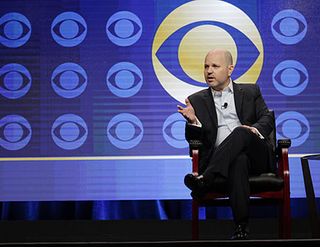Why TCA Broadcast Executive Sessions Aren’t Optional

Related: Busted Pilot Podcast: TCA Winter Press Tour, HBO’s ‘Westworld’ and Football
There are few comparisons for the sessions with network and channel executives held during the Television Critics Association’s (TCA) press tour. The tour is a twice-yearly event that brings the nation’s television critics to Los Angeles for 10 to 20-some days of presentations from broadcast networks, cable channels, and in recent years, SVOD services such as Netflix and Amazon as well. The tour is primarily a promotional extravaganza that provides journalists with access to stars and creators. But it is unlike a film junket, where invited journalists know various questions and topics are off limits and that violating these rules can lead to expulsion. For decades the top leadership of the U.S. television networks have faced their industry’s journalists in a forum that is far more like a press conference than the promotional event that otherwise characterizes the tour.
Earlier this week, executives at all the broadcast networks except The CW announced they would not hold executive sessions at this winter’s gathering. (There are two press tours per year, winter and summer, with the longer and more extensive event in summer). This decision—one that looks curiously like collusion—may seem a small story. And on Friday, Fox backtracked and said they were putting an executive session back on the schedule, having "underestimated the interest" in it, according to the network's official statement. Certainly most don’t even know what the TCA is or that press tour exists, but the three networks' withdrawal from executive sessions is notable, and a meaningful violation by broadcasters of their public trust.
Related: Netflix Skipping TCA Winter Press Tour
The news of the broadcast network executives skipping tour came shortly after an announcement that Netflix will not attend tour at all, foregoing the promotional features—and significant expense—of the tour. It may be that the world around television has changed so much that it is time to rethink the norms and practices related to the press tour. Journalism about television has changed tremendously as the same technological forces that have brought competitors such as Netflix, Amazon Video, and Hulu to the television industry have had far more significant effects on the print outlets that employ journalists. And certainly, the expense of days of panels featuring talent and journalists in one room can be questioned in era in which networks face many different marketing tools and ways of reaching journalists and viewers. TCA has already adapted to changing norms as its historic membership base—critics writing for local newspapers—was decimated by layoffs, while a new contingent of entertainment writers for internet-distributed outlets primarily incentivized to maximize clicks joined the ranks.
Related: Guest Blog: What CBS All Access Reveals About the Future of Television
Despite these changes, however, it is still the case that broadcasters use airwaves that are a natural resource that belongs to the people of the country. Though it is more difficult by the day to see how broadcasters serve the public interest, convenience, and necessity of the US populace, this remains their mandate. Broadcasters’ revenues may be diminished, but they still earn significant revenues and enjoy regulations assuring that it is easy for them to reach viewers by cable because they are broadcasters. With these privileges come responsibilities. Spending two hours a year facing questions from journalists who give voice to the questions of viewers seems a small and compulsory exercise for businesses effectively subsidized by a citizen-owned good.
Likewise, critics and journalists attending TCA need to engage with issues worthy of the public trust. The turnover in the critics’ corps may have left fewer journalists with an expansive sense of television industry dynamics in the room, and by some accounts this has contributed to executives’ sense of these panels as an unnecessary activity. But excellent and knowledgeable critics still attend tour, and frankly might be the only way the voice of viewers and citizens can be heard. The interrogation CBS received this summer about its lack of diversity is a good example of a meaningful discussion of broadcast responsibility. Moreover, network executives do not only oversee entertainment programming, but many also have purview over prime-time news magazines, specials, and late night, and may be the most senior access critics have to query network’s news operations.
Guest Blog: How OTT Hides Television's Revolution
Media industries are different from many others, and the broadcast industries stand in even further distinction among other media industries because they transmit over public airwaves. Can executives from other industries be expected to face questions from a room of journalists twice a year? Perhaps not. But as long as broadcasters rely on broadcast airwaves as a distribution technology they should be compelled to continue to appear as part of their responsibility.
Amanda Lotz is a fellow at the Media Center at Peabody and a professor at the U. of Michigan
Broadcasting & Cable Newsletter
The smarter way to stay on top of broadcasting and cable industry. Sign up below
